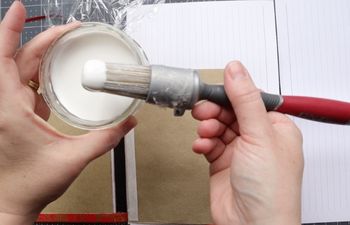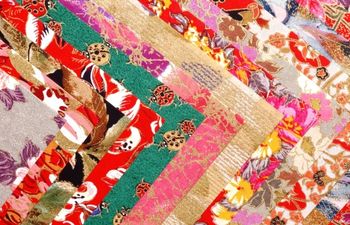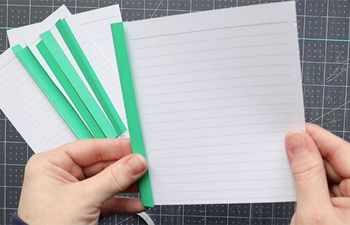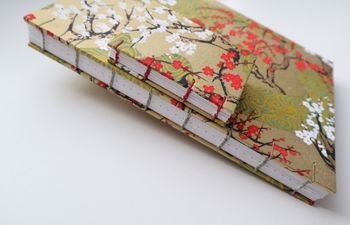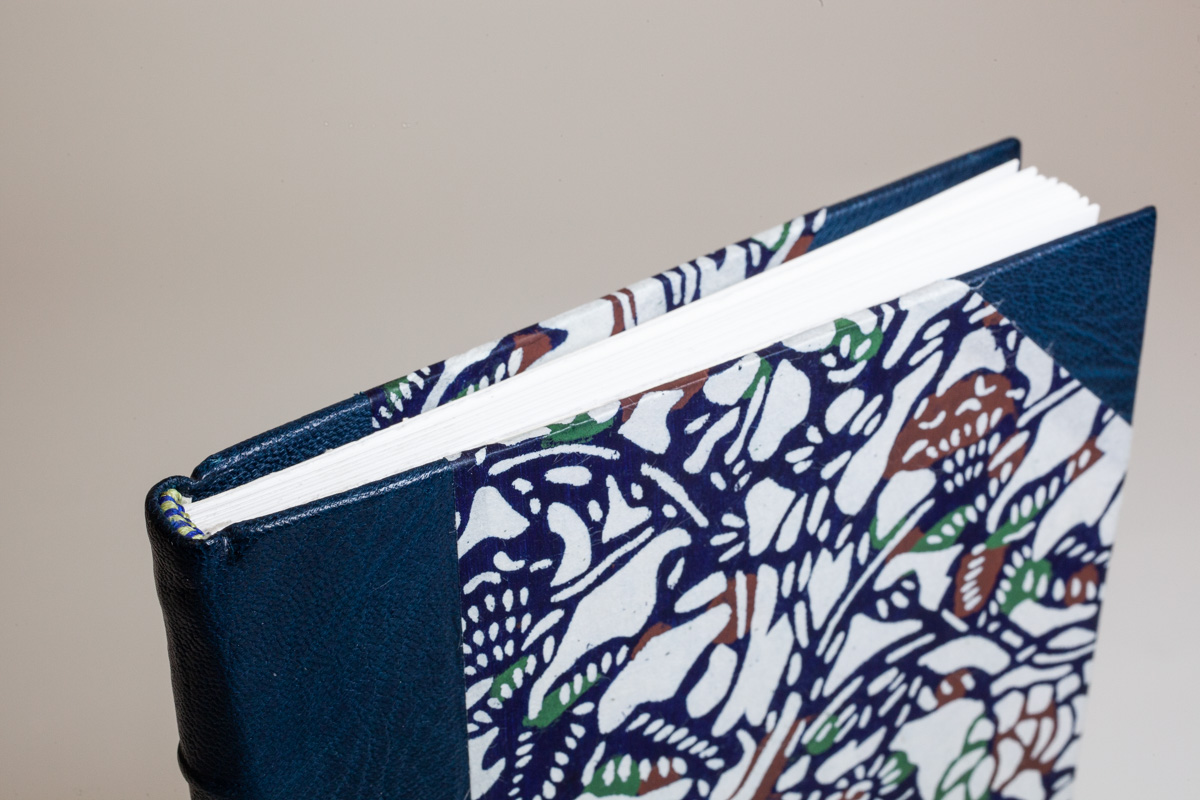Bookbinders use an archival-quality (non-acidic) paste or glue to hold books together. Not all books need glue, but most of the ones you see in big box stores use some type of adhesive. Bookbinders choose glue from three primary adhesive families. In this post, I’ll explain all three and give a few examples of each.
When do we use bookbinding glue?
There are a few really good reasons to use glue in bookbinding:
- Longevity. Well-made books held together with archival quality glue often last longer and hold up to frequent handling over time.
- Restoration. Whether it’s book repair (fixing with modern materials) or book preservation (restoring a book using as many original materials as possible), both use some type of paste.
- Structures. Whether it’s a box, slipcase, clamshell or other structure, all of them use adhesives to hold their shape.
3 types (families) of adhesives
Animal-based adhesives
Animal-based glues use animal parts such as connective tissues (protein), skin (hide) or bones (gelatin).
Back in the day, scholars and book artists used animal parts to create adhesives. This made good use of the animal and produced organic and non-acidic pastes.
Today, book preservationists use animal glues to restore ancient historical volumes to their original greatness.
Animal glues are made by hand and also sold commercially. Skin glues are called “hide glue” and often found in fine woodworking. Gelatin glues are referred to as “gelatin” or under the name Isinglass. I’ve not located any reputable seller of protein glues, but let me know if you can recommend one for this article.
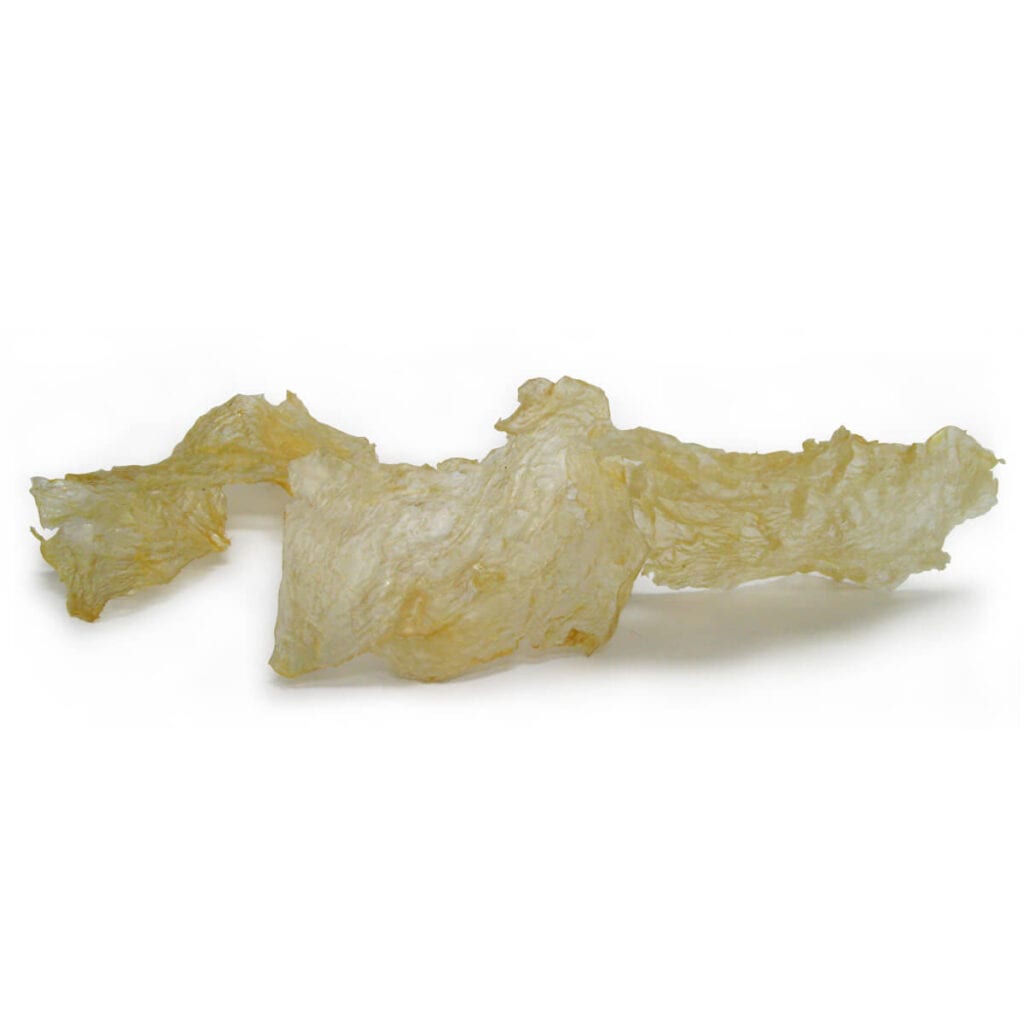
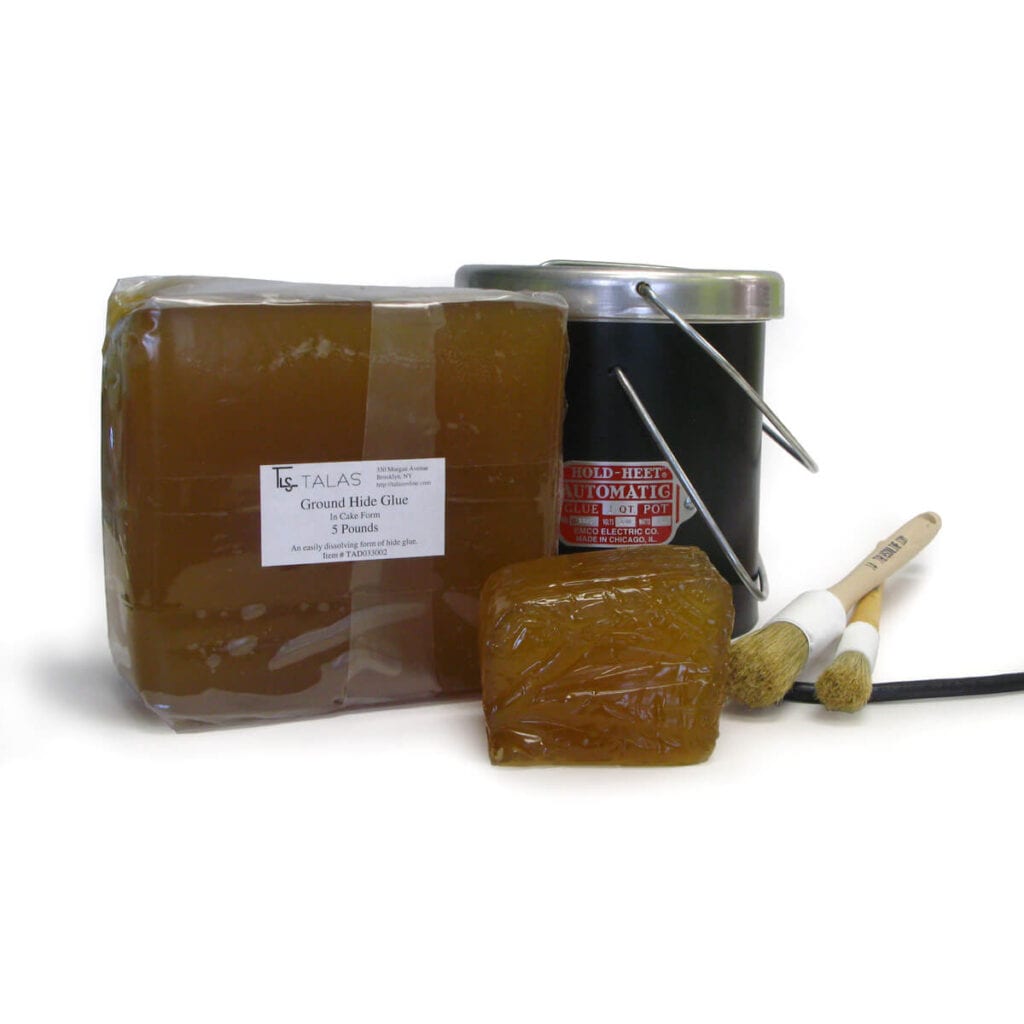
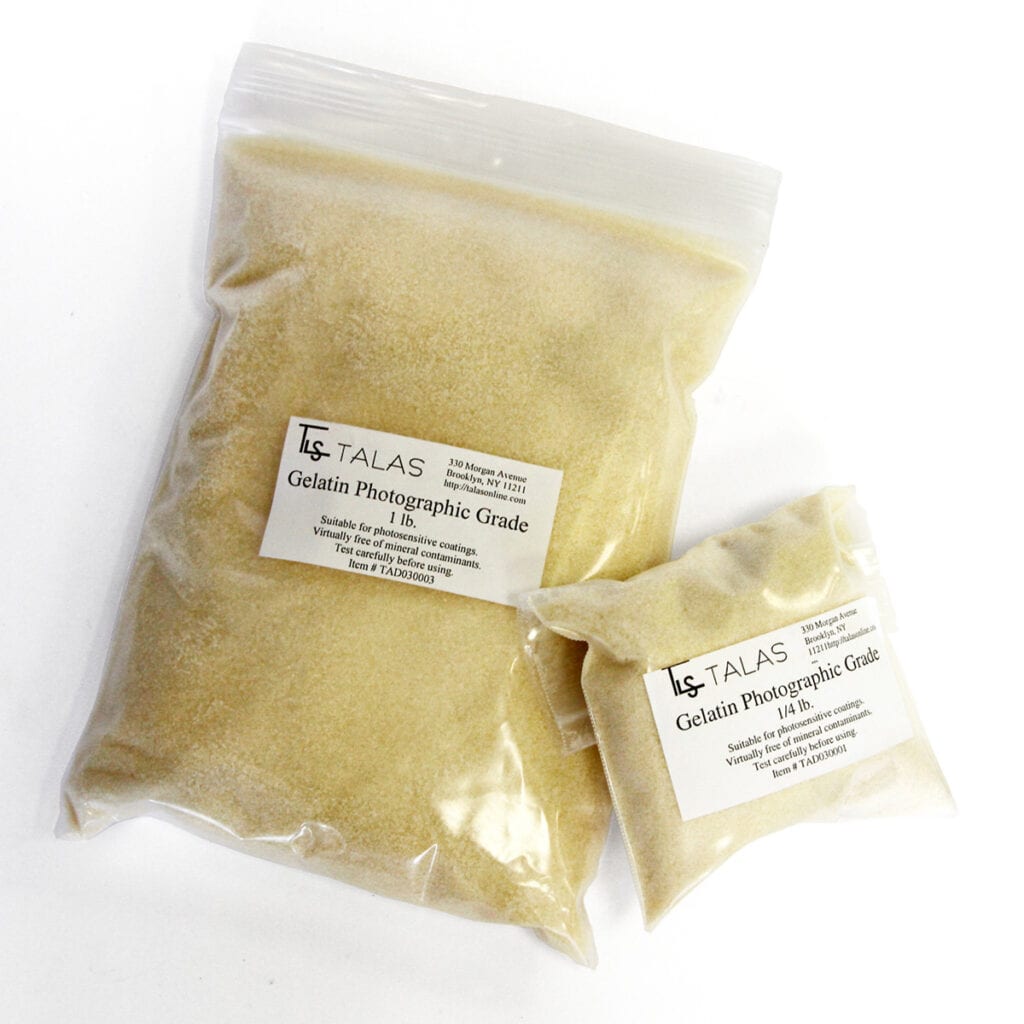
Plant-based adhesives
As time went on, we figured out how to create unique compounds from plant fibers called Methyl Cellulose (also known as methyl ether and methylcellulose). Because it comes from plants, it is non-toxic and non-acidic. Despite its organic origins, this compound is non-digestible. In other words, don’t eat it.
Methyl Cellulose is perfect for book restoration because you can use it with delicate materials for book repair.
Another plant-based adhesive is made from wheat. Wheat Paste is created through a process where wheat is saturated with distilled water and heated. This process activates proteins and gluten. The proteins and gluten make this an organic, versatile, non-toxic and acid-free alternative to Methyl Cellulose.
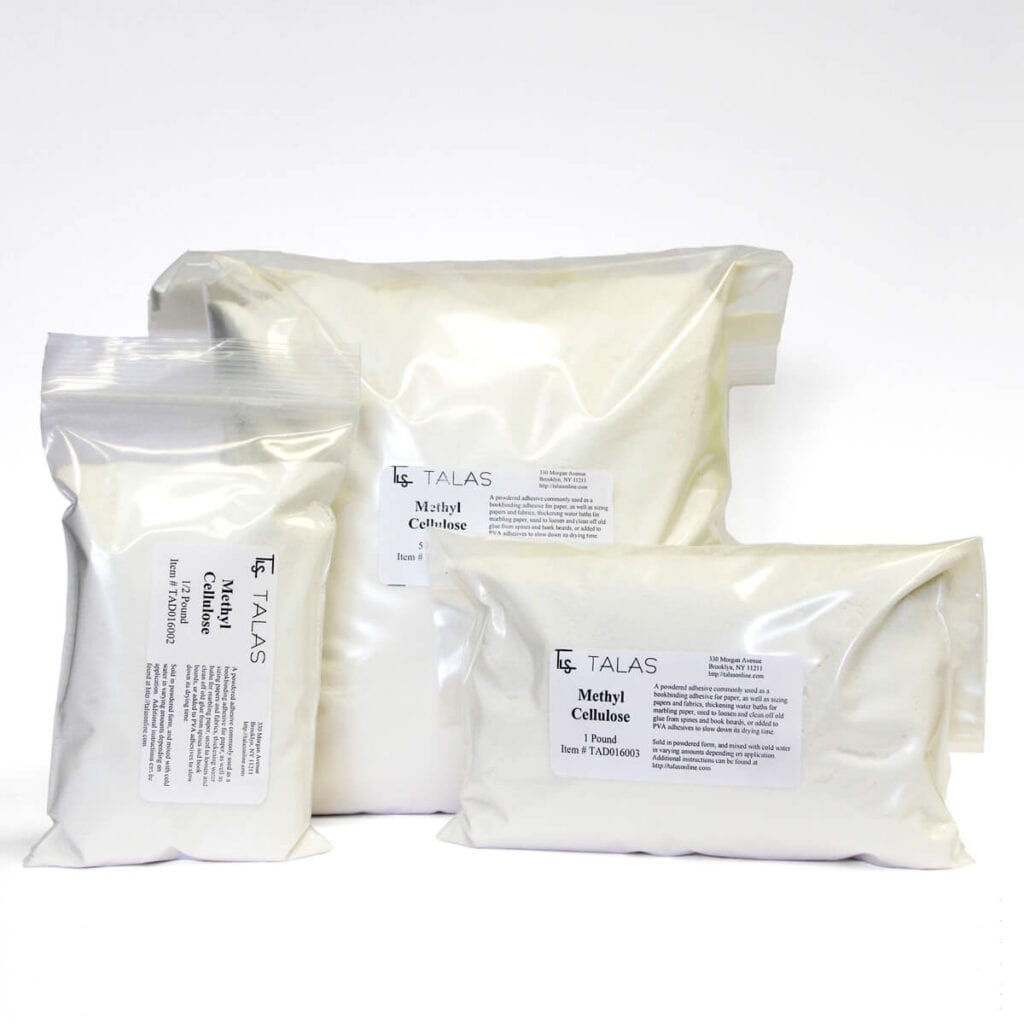
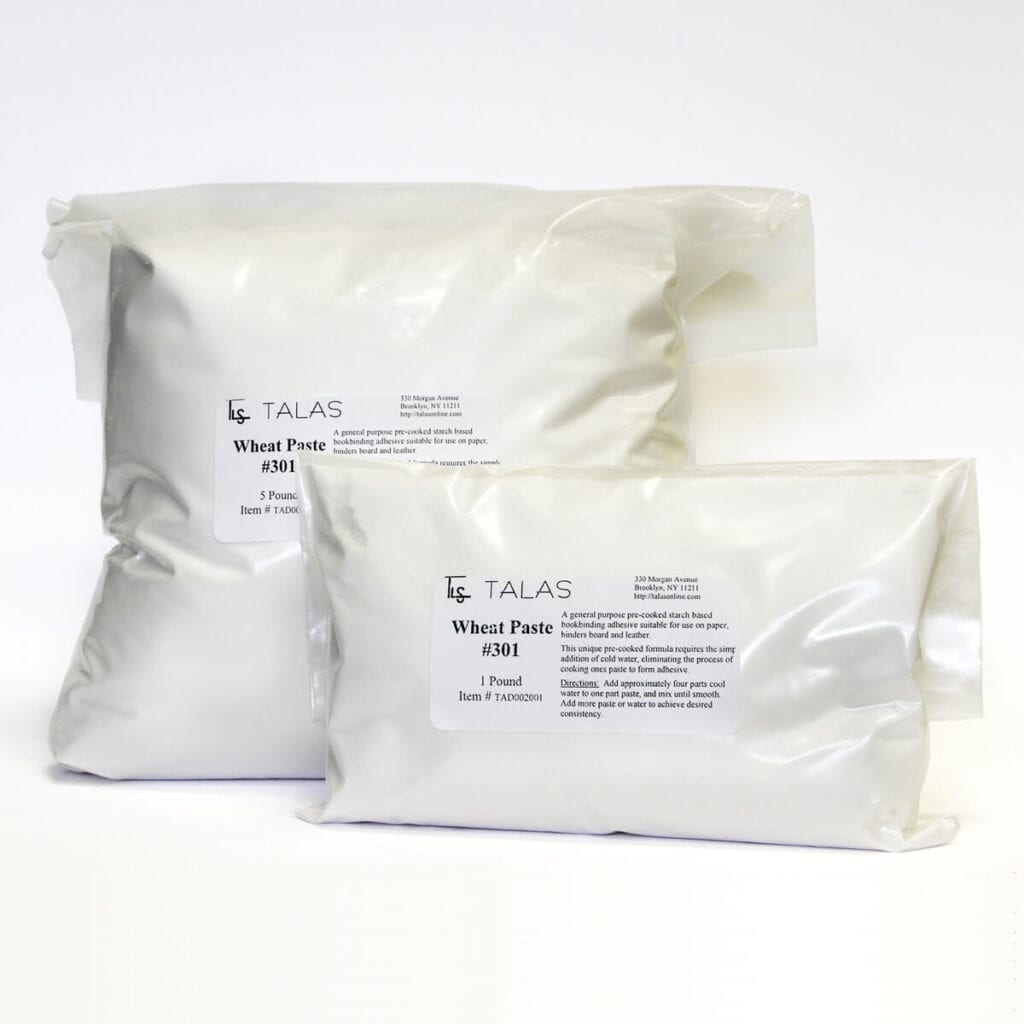
Synthetic adhesives
At some point, a lab rat decided to whip up some synthetic glue in order to avoid organics altogether. While I can’t prove this, it sounds plausible. In a burst of chemical genius in 1912, a German fellow named Fritz Klatteis invented Polyvinyl Acetate (PVA).
PVA is a wonderful all-application glue. Schools use it under the name Elmer’s Glue. Woodworkers call it wood or carpenter’s glue. In bookbinding, we use a non-acidic (archival quality) version that is sometimes called “bookbinder’s glue.”
PVA is strong, non-toxic, water soluble, dries clear and remains flexible. This makes it perfect for book making where flexibility and longevity are key.
It’s also affordable and can be modified to suit many purposes. When mixed with Methyl Cellulose, PVA takes on different consistencies and achieves longer drying times. Longer drying times allow for the repositioning of materials before they’re locked in place.
In the world of bookbinding glue, PVA has two forms. The first form is called Standard and the second is called Jade. Standard PVA glue is acid-free, pH neutral and dries quickly. Jade PVA glue is also acid-free and pH neutral, but is considered to be higher quality with a slightly longer drying time.
When starting out, I always used Standard PVA because it’s less expensive. I recently tried Jade 403 and love the extra time to reposition. I also noticed less clumps after being exposed to air for a while. Both are great, so don’t be afraid to start with less expensive supplies and work your way up.
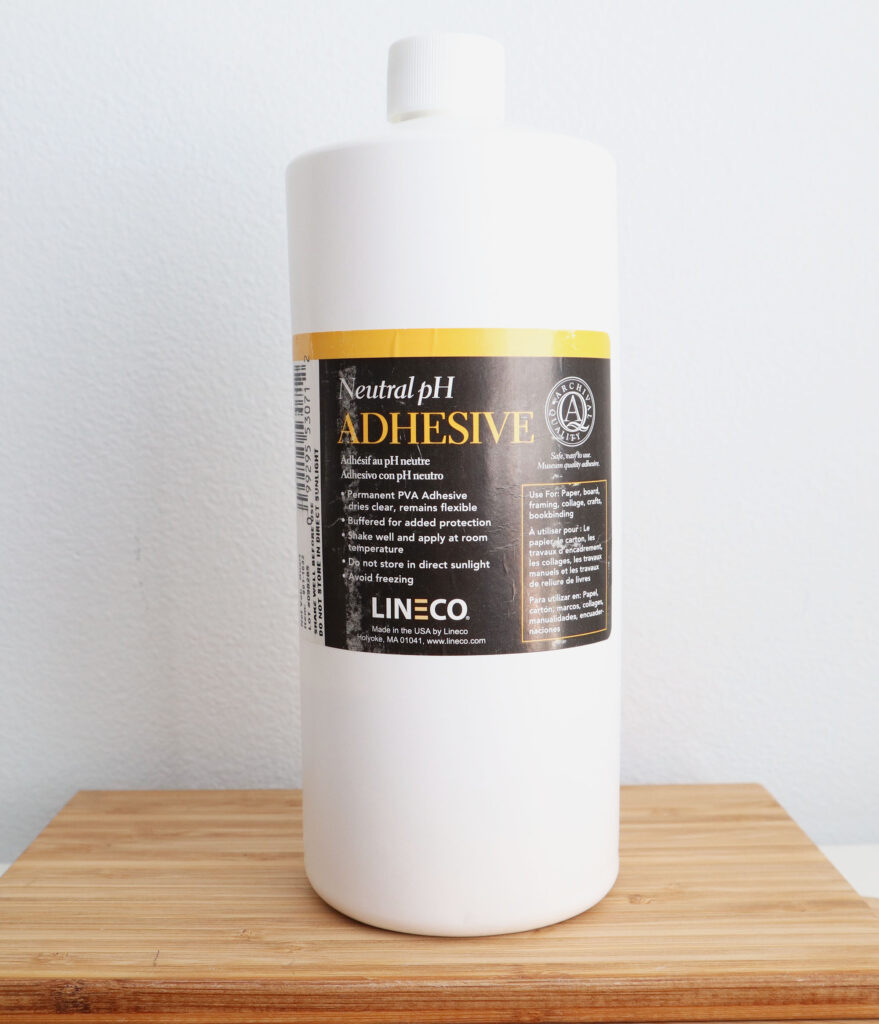
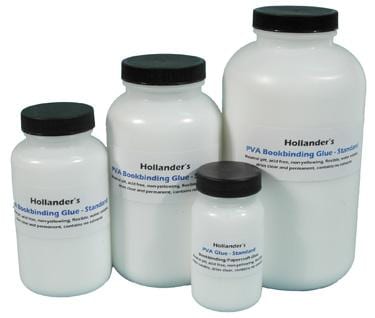
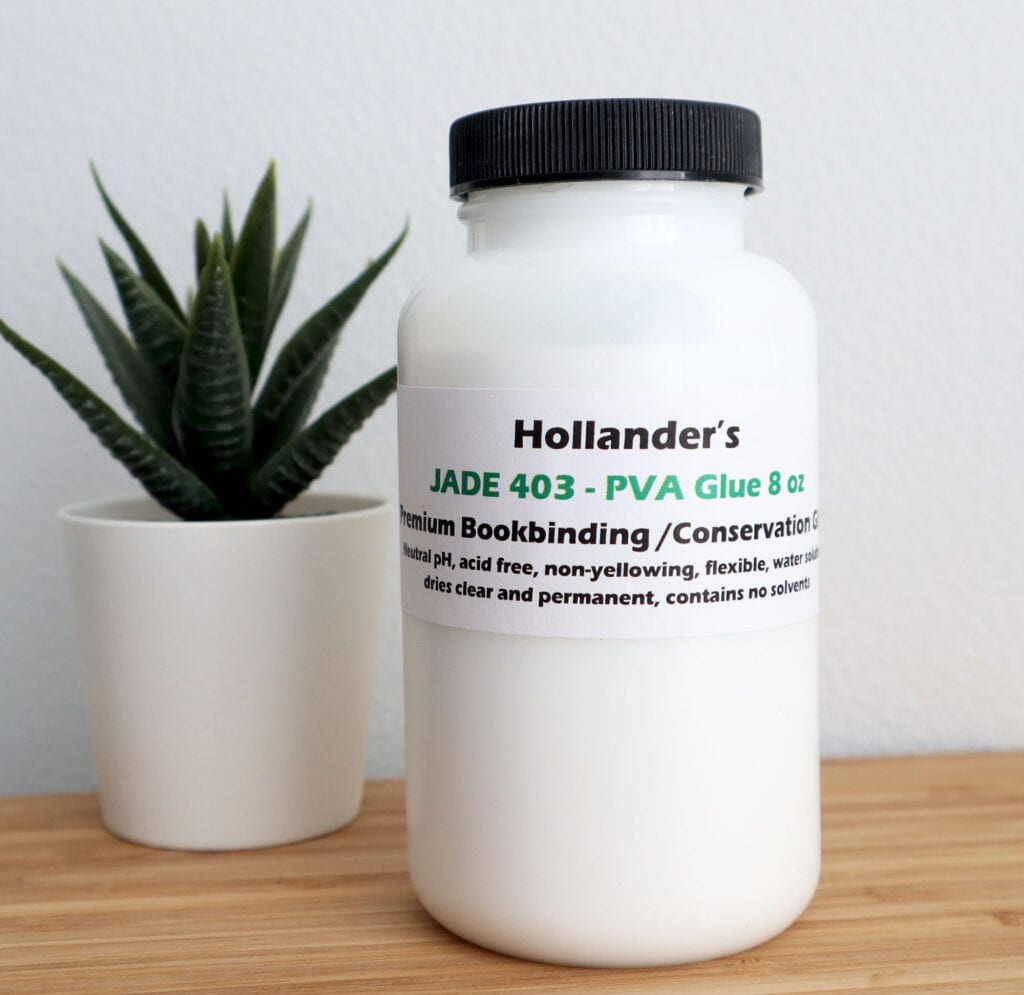
Which type of bookbinding glue is best for my project?
As discussed under each item, there are pros and cons to each type of adhesive. The goal is to choose an adhesive that gives your project the most benefit for the best price with least effort.
Bookbinders attempting to recreate a Medieval style binding might choose an Animal-based glue as these were originally used during the middle ages. Modern bookbinders may seek out Jade 403 PVA, which is a thicker PVA that allows for more dry time. Advanced binders may even mix PVA and Methyl Cellulose together to create a more flexible, slow-drying PVA variety.
New bookbinders may want to try out Wheat Paste as it is fully reversible, dries flexible and remains compatible with nearly all materials. The choice is entirely yours.
Bookbinding Adhesives Quick Reference Chart
I created a downloadable Bookbinding Adhesives Quick Reference Chart so you can decide, at-a-glance, which glue is best for your project.
Feel free to download it and hang it up in your bindery for easy reference.
Resources
Where to Buy Bookbinding Glue
I’ve personally purchased from these retailers, but it is possible to buy from other places on the Internet. I also include a jar of PVA (I may even send Jade 403 to surprise you!) in my bookbinding kits.
Regardless of what you choose, I wish you the best in your research and use!
- Hide glue (animal-based) – Talas Online
- Isinglass (animal-based) – Talas Online
- Methyl Cellulose (plant-based) – Talas Online or Hollander’s
- Wheat Paste (plant-based) – Talas Online or Hollander’s
- PVA (synthetic) – Standard: Hollander’s or LineCo
- PVA (synthetic) – Jade 403: Hollander’s or Talas Online
Are you new to bookbinding?
Check out my New Bookbinder Guide for helpful information!
So, what do you think? Which glue do you use? If you don’t use any of these yet, which one do you think you’re most likely to use? Pop over to Instagram or Facebook and share your thoughts with me!
ALL my best,
Misty
